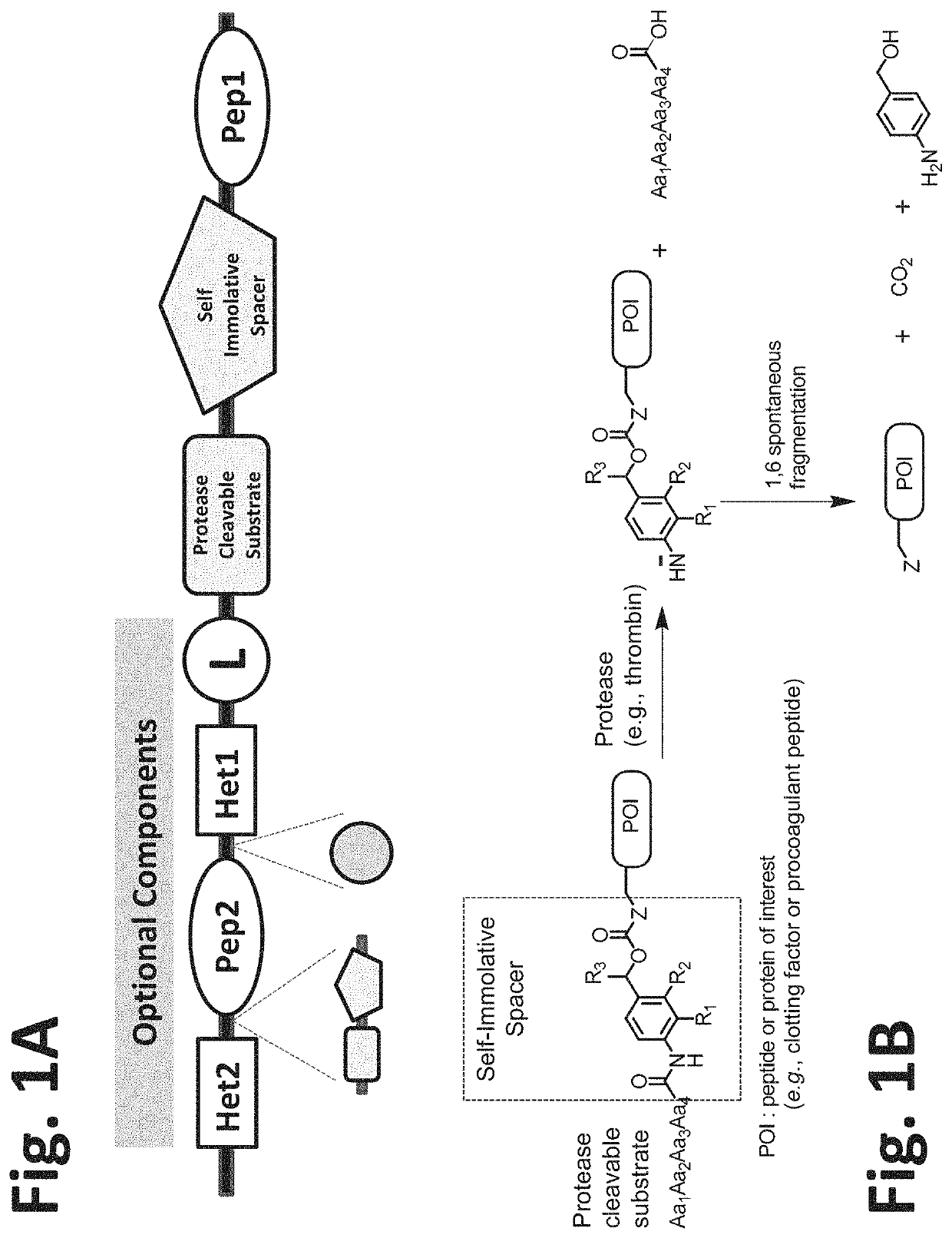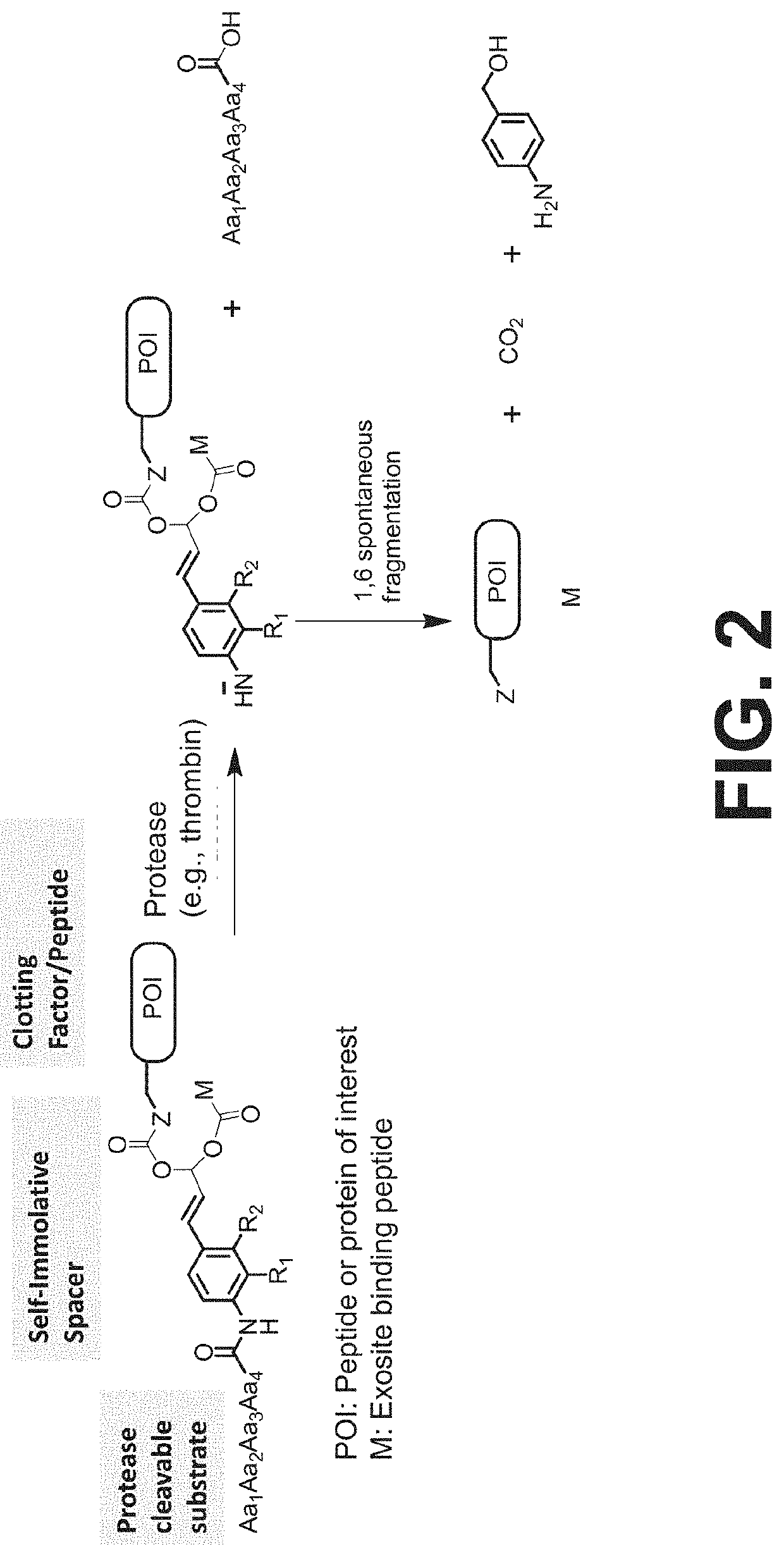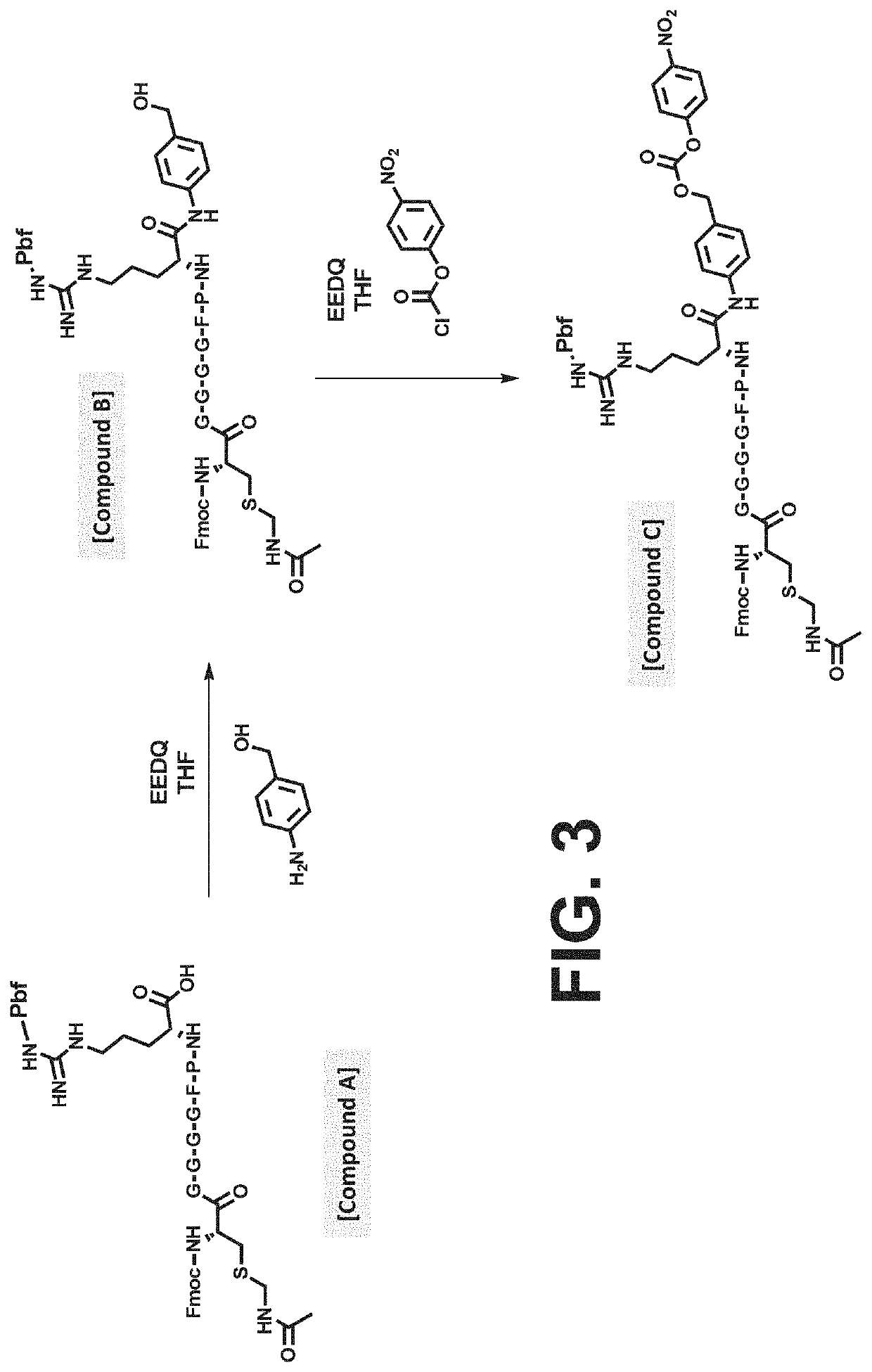Procoagulant compounds
a technology of procoagulant compounds and compounds, which is applied in the direction of peptides/protein ingredients, enzymology, peptides, etc., can solve the problems of inconvenient and painful frequent administration, reduced in vivo and in vitro blood clotting activity, and inconvenient medical monitoring
- Summary
- Abstract
- Description
- Claims
- Application Information
AI Technical Summary
Benefits of technology
Problems solved by technology
Method used
Image
Examples
example 1
Thrombin-Activatable Procoagulant Compounds with PABC Self-Immolative Linker
[0417]Seven different peptides, designated Compound 1 to 7, were used in the experiments disclosed herein (TABLE 1). The sequence Ile-Val-Gly-Gly-Gln-Glu in Compounds 1 to 6 corresponds to the six N-terminal amino acid residues of the heavy chain of the FXa clotting factor. These compounds reproduce the coupling of a thrombin cleavable substrate and a self-immolative spacer to the N-terminus of a clotting factor or a fragment thereof, in this specific example, FX. Compound 7 corresponds to a synthetic procoagulant peptide fused to PABC and to a thrombin-cleavable substrate, and further including a linker and a scaffolding amino acid heterologous moiety (Cys) for attachment of half-life extending moieties such as PEG.
TABLE 1Com-poundStructure12(D-Phe)-Pip-Arg-Ile-Val-Gly-Gly-Gln-Glu-NH23Ala-Leu-Arg-Pro-Arg-Ile-Val-Gly-Gly-Gln-Glu-NH2456Ala-Leu-Val-Pro-Arg-Ile-Val-Gly-Gly-Gln-Glu-NH27Leu-Ala-Ser-Tyr-Cys-Trp-Le...
example 2
Thrombin-activatable FX with PABC Self-Immolative Linker
[0445]Peptide synthesis method equivalents to those described above, standard recombinant protein production methods, and standard chemical conjugation techniques are used to generate the procoagulant compound described in this example.
[0446]Factor X consists of two polypeptide chains linked by a disulfide bridge (Cys172-Cys342): the 139 amino acid light chain in composed of the Gla domain and the two EGFs; the 306 amino acid heavy chain is composed of the activation peptide joined to the catalytic domain. The activation of factor X requires proteolytic cleavage between the activation peptide and the catalytic domain. The tensase complex and the FVIIa-TF complex perform this cleavage between the Arg234 and Ile235 residues (FIG. 10). As in all serine proteases, the N-terminal residues of the catalytic chain of activated factor X are involved in the enzymatic activity. The generated N-terminal Ile235 in particular plays a fundame...
example 3
Thrombin-activatable FVII with PABC Self-Immolative Linker
[0449]Peptide synthesis method equivalent to those described above, standard recombinant protein production methods, and standard chemical conjugation techniques are used to generate the procoagulant compounds described in this example.
[0450]The present disclosure provides thrombin-activatable FVII (TA-FVII) analogs comprising a synthetic thrombin substrate and a self-immolative spacer (e.g., PABC) linked to FVIIa (FIG. 13). After proteolytic cleavage of the thrombin substrate (D-PhePipArg) and 1,6 spontaneous fragmentation, the natural sequence of FVIIa is released (FIG. 10). The TA-FVII is generated semi-synthetically using native chemical ligation chemistry. This process involves the reaction of a recombinantly produced FVII fragment containing an N terminal cysteine residue 159 on the catalytic domain (CysFVII) with a synthetically produced thioester peptide to generate a native amide bond at the linkage site. To generate...
PUM
| Property | Measurement | Unit |
|---|---|---|
| blood coagulation disorder | aaaaa | aaaaa |
| catalytic activity | aaaaa | aaaaa |
Abstract
Description
Claims
Application Information
 Login to View More
Login to View More - R&D
- Intellectual Property
- Life Sciences
- Materials
- Tech Scout
- Unparalleled Data Quality
- Higher Quality Content
- 60% Fewer Hallucinations
Browse by: Latest US Patents, China's latest patents, Technical Efficacy Thesaurus, Application Domain, Technology Topic, Popular Technical Reports.
© 2025 PatSnap. All rights reserved.Legal|Privacy policy|Modern Slavery Act Transparency Statement|Sitemap|About US| Contact US: help@patsnap.com



